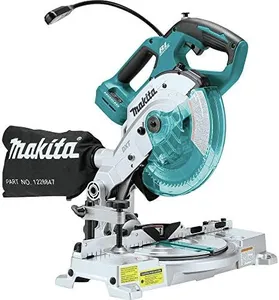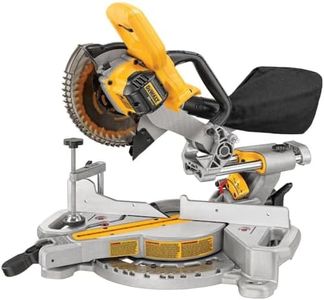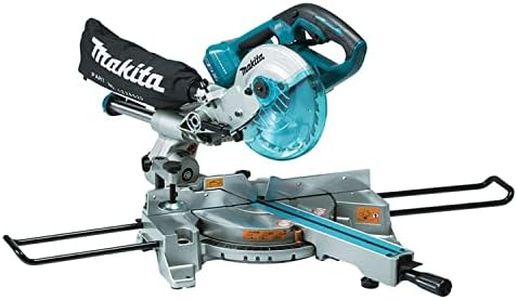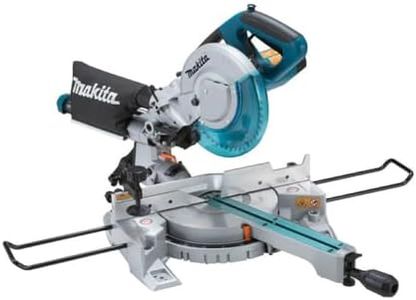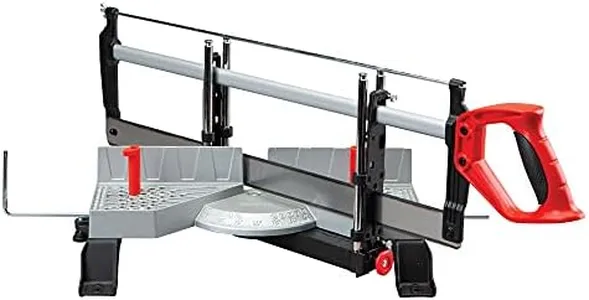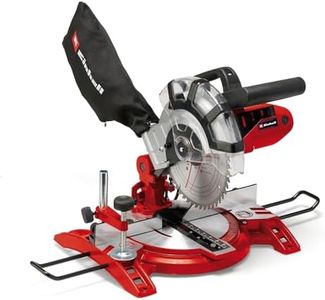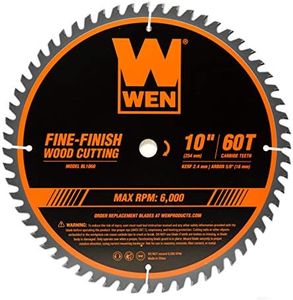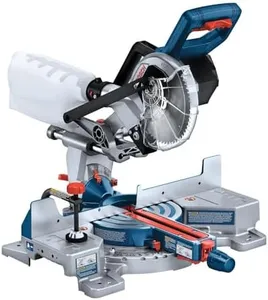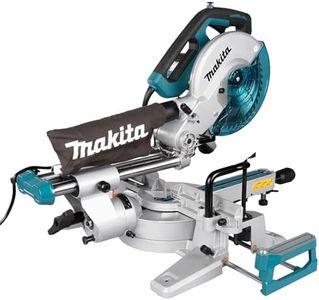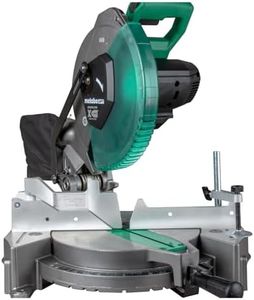We Use CookiesWe use cookies to enhance the security, performance,
functionality and for analytical and promotional activities. By continuing to browse this site you
are agreeing to our privacy policy
10 Best Miter Saws
From leading brands and best sellers available on the web.Buying Guide for the Best Miter Saws
Choosing the right miter saw can make woodworking, trim work, or even certain metal-cutting projects far more efficient and accurate. Before you buy, consider what kinds of materials and projects you'll commonly work on: are you doing simple trim for the home, or bigger carpentry or renovation jobs? Understanding your needs helps narrow your choices to the most suitable type of miter saw, whether for light DIY tasks or more demanding professional use.Blade SizeBlade size refers to the diameter of the circular blade the saw uses, and it determines the maximum width and thickness of material you can cut. Common blade sizes include 7-1/4-inch, 10-inch, and 12-inch. Smaller blades are lighter and often more affordable, good for trim and smaller pieces, while larger blades can tackle bigger boards, making them better for framing, decking, or larger moldings. Consider the scale of wood you usually cut: if you’re mostly doing baseboards and small moldings, a 10-inch saw is enough. If you need to cut wider lumber or more substantial material, a 12-inch saw is a safer bet.
Type: Basic, Compound, Sliding, Dual BevelMiter saws come in several main types: basic, compound, sliding, and dual bevel. A basic miter saw can cut at angles, suitable for simple crosscuts and miter cuts. A compound saw adds the ability to tilt for angled bevel cuts, useful for crown molding or frames. Sliding models let the blade move forward and backward, greatly increasing the width of boards you can cut. Dual bevel means the saw tilts both left and right, saving time since you don’t need to flip your workpiece. If you mostly do straight cuts and basic angles, a simple miter saw could suffice. For crown molding, picture framing, or wider boards, a sliding compound saw—possibly with dual bevel—is the most versatile.
Cutting CapacityCutting capacity describes the maximum width and thickness of material the saw can handle at different angles. This spec is usually expressed as both a maximum crosscut (straight across the board) and at typical miter/bevel angles. Larger capacities let you tackle wider and thicker boards, which is important for tasks like cutting deck boards, beams, or thick trim. If your projects involve mostly narrow moldings, a lower capacity is fine. For larger and more varied cuts, look for greater cutting capacities.
Motor Power (Amperage)Motor power—often rated in amps—determines how easily the saw can cut through dense or thick material. Lower-amp motors (10-12 amps) suit lighter woodworking tasks, while higher-amp motors (around 15 amps) are best for faster, cleaner cuts through dense hardwoods or large boards. Choose according to your material: for softwood trim, standard motors work well, but for hardwoods, engineered lumber, or tough tasks, more power ensures smoother cuts and less strain on the tool.
Dust CollectionDust collection refers to the saw’s ability to capture sawdust as you cut. Miter saws often include a dust bag or a port to which you can attach a vacuum. Good dust collection keeps your workspace cleaner and safer, reducing airborne particles. If you’re working indoors, have allergies, or just want less mess, prioritize a saw with effective dust collection features. If you typically work outdoors or occasionally, the standard options will usually be adequate.
Safety FeaturesSafety features on miter saws can include blade guards, electric brakes (which stop the blade quickly after releasing the trigger), and trigger locks. These protect you, prevent accidents, and provide peace of mind during use. If you’re a beginner or plan to use the saw in a shared or family workshop, prioritize models with robust safety features. Experienced users may focus more on performance but shouldn’t overlook safety.
PortabilityPortability refers to how easy it is to move and handle the saw, based on its weight, size, and handle design. If you often work in different locations or need to store the saw between uses, lighter and more compact models are helpful. If your saw lives on a dedicated workbench, weight and size are less critical, so you can prioritize capacity and features instead.
